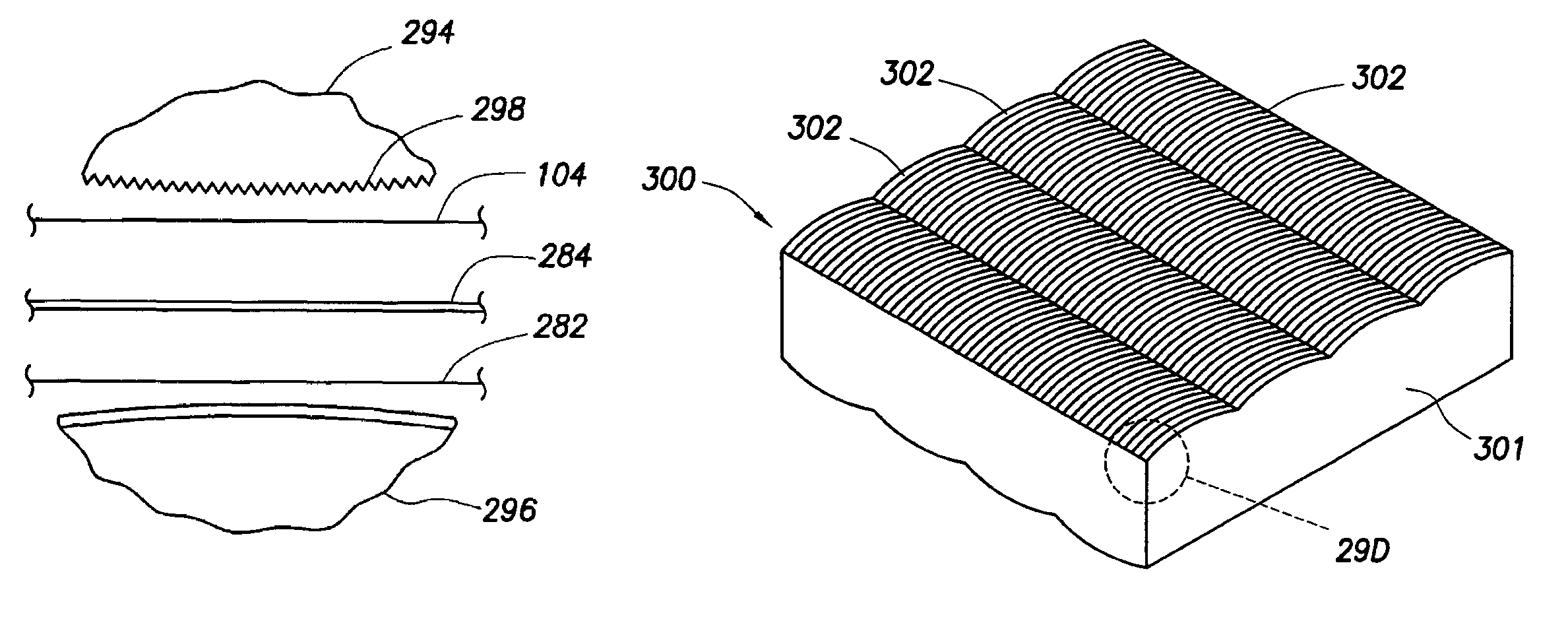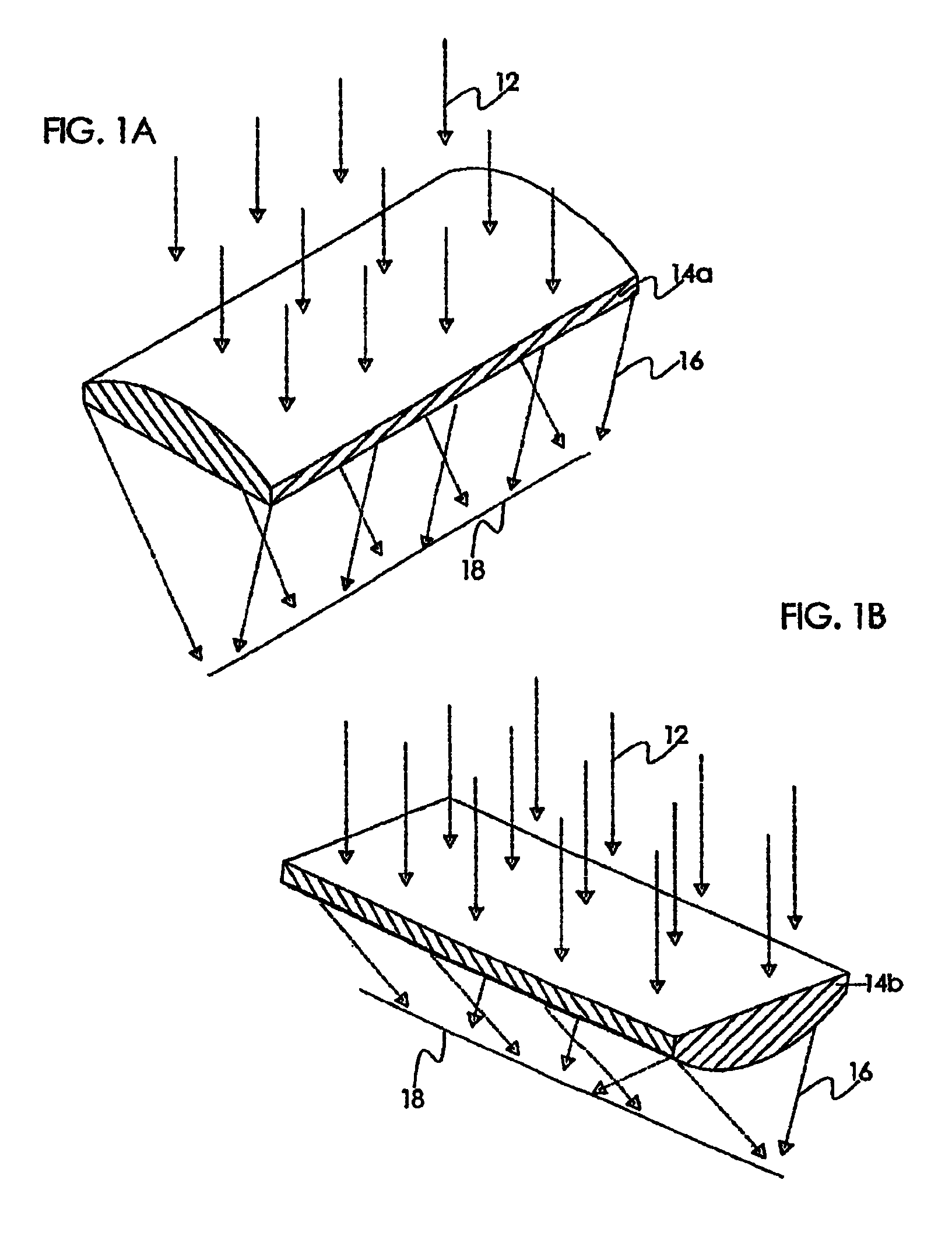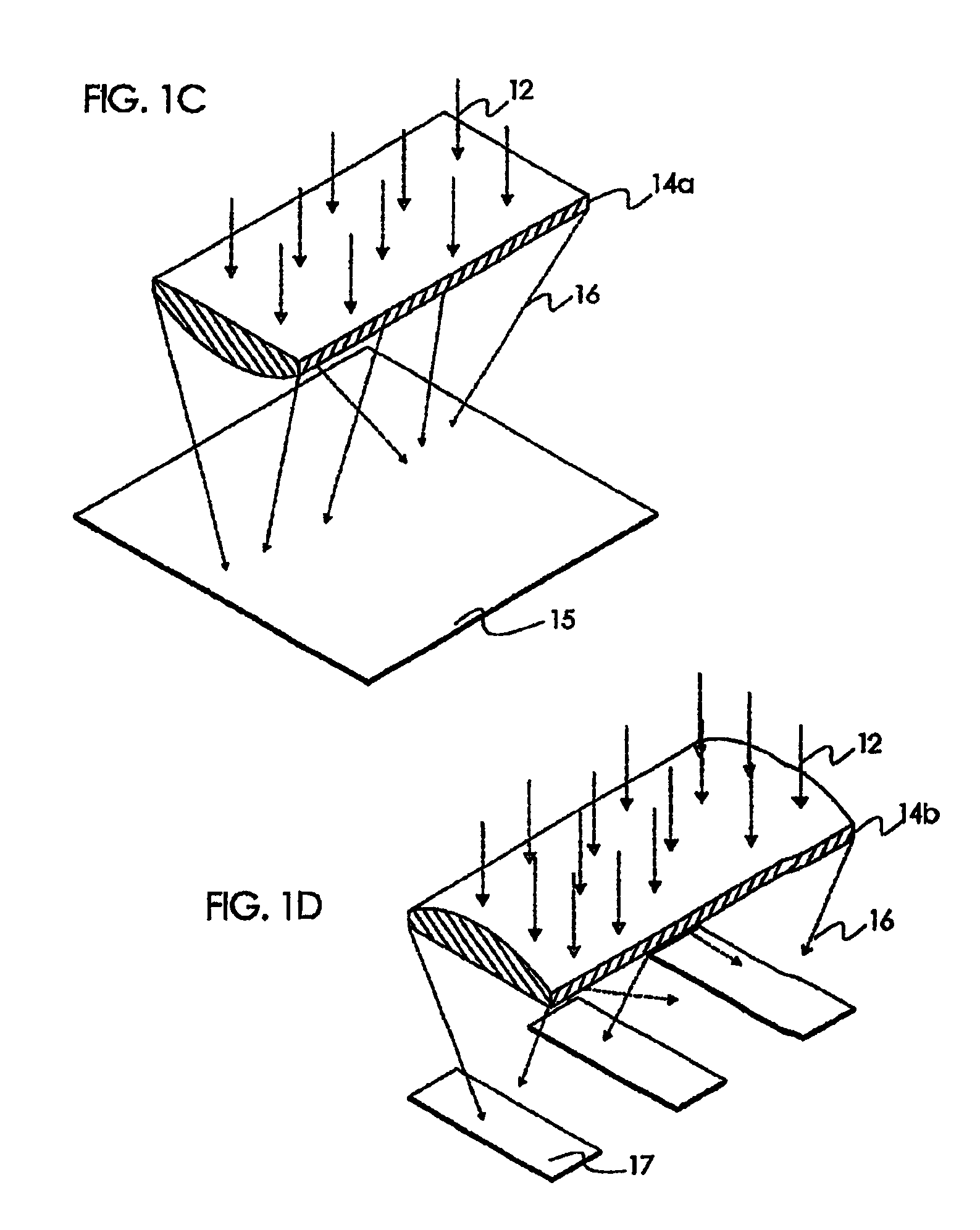Variable optical arrays and variable manufacturing methods
a manufacturing method and technology of lens array, applied in the field of lens array, can solve the problems of changing the characteristics of the lens, inability to produce arrays with very small lenses, and large number of lens elements
- Summary
- Abstract
- Description
- Claims
- Application Information
AI Technical Summary
Benefits of technology
Problems solved by technology
Method used
Image
Examples
first embodiment
[0101]In FIG. 10, a tool 134 is created by making a series of longitudinal cuts to create thin walls 102 spaced at a distance D of preferably 1 mm. Tool 134 is shown with v-shaped longitudinal cuts, but can also have square cuts. Holes (not shown) or even grooves, may be placed along the bottom of the cuts to provide communication for a differential pressure V. A sheet of film 104, transparent or reflective, is placed over the walls 102. Then, differential pressure V is applied via the holes (not shown) between the walls 102 to pull the film 104, and a curved axial optic 110 is formed. It is very important to understand that there is no further polishing of the optic that is required in order to have an optical quality surface. Then, in a first embodiment, a polymer 112 may be poured behind the curved axial optic 110, and a permanent axial optic is created, having a light focusing ability as shown in FIG. 2A. A preferred polymer material may be obtained from Applied Poleramics, Inco...
second embodiment
[0102]In a second embodiment, a transparent tool 100 may be used with film 104. Here, the curved axial optic is continuously variable in curvature depending upon varying level of differential pressure. When a projected image is focused through the curved axial optic, the curvature of the optic may be changed by changing the level of differential pressure V, thereby yielding a variation in the focus of the image. This has very useful applications when the changing focus is coordinated with either a changing image or a changing viewer location.
[0103]In any preferred embodiment, any film 104 may be used such as acetate, polyethylene, polypropylene, polycarbonate, or acrylic where the thickness is preferably between 0.25 mils and 1 mil.
[0104]When two tools 100 are employed simultaneously, facing each other in a crossed relationship, then it is easily seen that a crossed optical array is created. Then, the space between the films 104 may be filled with a plastic (the term “plastic” is in...
PUM
 Login to View More
Login to View More Abstract
Description
Claims
Application Information
 Login to View More
Login to View More - R&D
- Intellectual Property
- Life Sciences
- Materials
- Tech Scout
- Unparalleled Data Quality
- Higher Quality Content
- 60% Fewer Hallucinations
Browse by: Latest US Patents, China's latest patents, Technical Efficacy Thesaurus, Application Domain, Technology Topic, Popular Technical Reports.
© 2025 PatSnap. All rights reserved.Legal|Privacy policy|Modern Slavery Act Transparency Statement|Sitemap|About US| Contact US: help@patsnap.com



